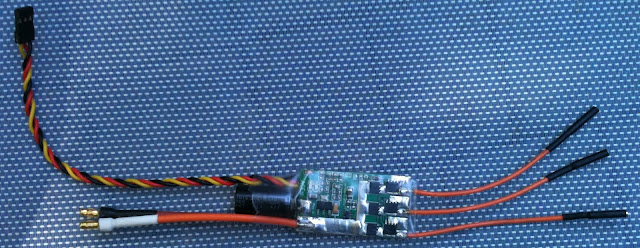Ever since the modern (20mm) MEGA caliber and the Centurion was a thing, I have been wanting to build something reliable and magfed to run them full auto. This has only intensified with the advent of special rules for MEGA hits such as defeating shields/armor, killing special zombies, causing double damage, and counting as more points for DTC-like gametypes.
I never ended up doing what I should have back in the dark ages (jam a Zeus cage and a RS pusher box into a hacked up Centurion receiver), so the intent to eventually do a 20mm project followed me all the way to the T19 era, and now I finally got a round tuit to spare and did it.
Hence:

For motors at dev stage, I used Racerstar BR2207S, as I had some 1600kv ones on hand already.
Now this needs a breech. I opted for the existing mag standard. It's easy to get caught up in This mag design has X mm of wasted length! and similar griping, and that's how we get crappy, incompatible mags. Some careful design was required to use these mags, including the rear feed ramp to deal with top round positioning issues and the 0 mm cage flange thickness in front of the mag to keep required bolt stroke to a minimum.
Design elements are all the same as other modern T19 breeches. Angle cut, flared magwell, overinsertion stop on feed lips, no fence on the front for comfort, 7mm flanges, ...
This then gets its own mag release, its own side cover set (below), and a stock T19 drivetrain stack with the exception of a slightly longer bolt.
Add in a top rail front segment and one underbarrel gap filler/finisher/hand stop doohickey to polish it off, and we get...
Filaments in this build: Yoyi translucent red PETG, CC3D bluegrey PETG, Makeshaper orange PETG, Overture white PETG.
Results
Overall excellent. I have had Hasbro mega up to mid 160s fps, and the one used Whirlwind I currently have up to 140-ish, and breakin wasn't even complete when I shot those. Also, this is really easy on ammo compared to a Zeus cage on mega --or a .50 cal T19. Reliability is so far awesome at the 12rps I have it set to max out at. It will feed and shoot just about anything and I have probably shot some of my testing darts 15 times into hard objects by now.
Now about the bad: The motors. I grabbed these because I had them and they would work for a ballistic proof of the cage. This could really use a larger, more modern motor, and also slightly higher kv than 1600, or else 5S or 6S. Spinups to high (which is 18-20k for this) speed are pretty crappy by modern standards, though not unuseful, with the 1600kv BR2207S and 4S. Also, Racerstar motors have quality issues and as usual the dynamic balance on this system is not great. I'll probably go for T-Motor F80 for an upgrade/option for this in the future.
Release
Link
Release notes duplicated here:
###############################################
# T19 MEGA (20x95mm) Initial Release 03-07-21 #
###############################################
Takes Hasbro-style 20mm mags. Mag tolerances are crap on commercial mags,
and some may need hand fitting with a file, particularly clone mags, as well
as release notch issues needing adjustment.
3 mag releases have been provided: the "stock" and -1mm (lower) straight
versions, and the "circular surface" one which is closer to what my hand fit
"stock" release ended up as after adjusting to get easy lockup and minimal play
once locked on all my mags. I recommend trying that one first. Some hand fitting
may be required regardless.
The "MegaMagDropfreeifier" part is a mod for Hasbro (style) 20mm mags which fills
in the second void/notch above the actual release notch, which often causes
trouble with snagging on the release. Print it out and glue it to *one* half of
the mag body (not both). File smooth and/or fill with a little devcon.
Top rail: Uses the T19_TopRail_NewFullLengthRearSeg.stl rear rail segment used
by the new (Gen2) .5 full length breech. Front rail is specific and included.
Bolt is different. All other drivetrain, stock, controls, etc. parts are the
same as a .5 cal T19E1.
Firmware difference is maxRPM=20000 and maxROF=700.












































